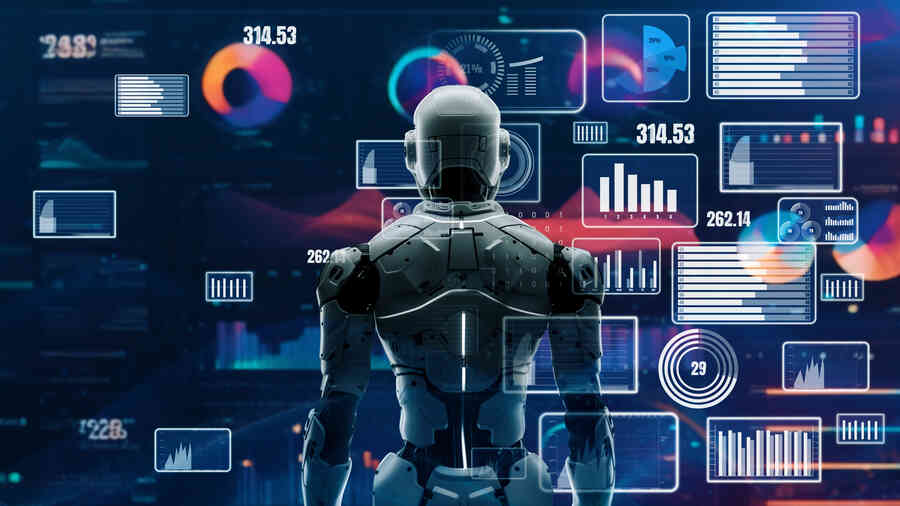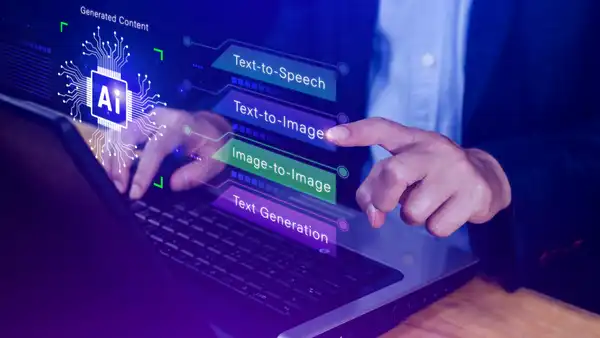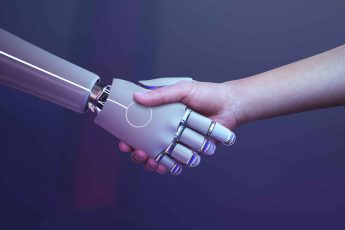Beginner’s Guide to Using AI in the Workplace

Unlock the potential of AI in your job! Our beginner’s guide to using AI in the workplace covers essential tools, tips, and strategies to boost productivity.
Yet, only 20% of frontline employees have adopted it, leaving a staggering gap between AI’s potential and its current usage. AI is a revolutionary tool that, when understood and leveraged properly, can significantly enhance productivity, efficiency, and job satisfaction. using ai at work

Artificial Intelligence (AI) is reshaping the workplace so fast that some estimates suggest 300 million jobs globally could be affected, according to a recent Goldman Sachs report.
For beginners, learning how to navigate AI tools is key to staying competitive in an ever-evolving professional landscape.

Business Corporate People Working Concept Generative AI
Understanding the Role of AI in the Workplace
AI in the workplace isn’t just about automation replacing human jobs—it’s about augmentation. AI tools are designed to complement human workers by handling repetitive tasks, analyzing vast amounts of data, and delivering insights that would otherwise take hours or even days to uncover. McKinsey reports that AI could automate up to 70% of an employee’s tasks in some sectors, freeing up time for more strategic and creative activities.
For example, AI can streamline mundane tasks such as sorting emails, managing schedules, or even drafting documents. It’s also used for more complex functions like data analysis, customer service, and product recommendations, offering a high level of precision that boosts efficiency. By integrating AI, businesses can cut down on error rates and improve decision-making processes.
Getting Started: How to Use AI at Work
For beginners, diving into the world of AI may seem intimidating, but starting small makes all the difference. Many AI tools are readily available, offering user-friendly interfaces that require little to no technical background.
- Chatbots and Virtual Assistants: Tools like ChatGPT or Microsoft’s Cortana can handle customer queries, set reminders, or even assist with project management.
- AI-Powered Analytics: Google Analytics and Salesforce Einstein provide in-depth insights into business performance, helping you make data-driven decisions.
- Content Creation Tools: Platforms like Jasper and Grammarly use AI to generate ideas, draft articles, and improve your writing by checking for grammar, tone, and engagement.
Mastering even one of these tools will bring you a step closer to integrating AI into your daily work.

Ridiculously Useful: Unbelievable AI Stats
If you’re still unsure about using AI in the workplace, consider this: a study by Stanford University found that call center agents using AI saw a 14% increase in productivity, especially among those new to the job. Even more impressively, AI-driven systems can analyze thousands of hours of customer interactions and come up with the best possible responses—things that might take a human years to learn with a.i. in the workplace.
In some companies, AI has sped up mundane processes by over 80%, allowing employees to focus on higher-level tasks. This level of productivity increase is not just a small tweak to operations—it’s a paradigm shift in how work gets done.

Addressing AI Fears: Will It Replace Jobs?
One of the biggest fears surrounding AI is that it will lead to mass layoffs. However, experts suggest that AI will mostly impact routine, predictable tasks rather than creative or strategic roles. While using AI in the workplace may reduce the demand for certain administrative jobs, it also creates new opportunities in tech-driven fields such as AI maintenance, data analysis, and AI ethics. generative artificial intelligence (ai) use in the workplace policy.
AI is a tool to enhance human productivity, not replace it. Workers who embrace this technology and adapt it to their roles can enhance their value in the workplace. For example, AI can take over repetitive tasks like data entry, while employees focus on interpreting those results and making strategic decisions based on AI insights.

Building Your AI Skills: The Next Steps
Getting ahead in the AI revolution doesn’t require you to become a software engineer. Plenty of online courses are available for free which helps beginners understand the fundamentals of AI. LinkedIn Learning also offers a range of tutorials from AI basics to more advanced applications like machine learning.
Experiment with AI tools in your daily workflow. You’ll be amazed at how much time you can save. Start with tools like Trello for project management or Google Sheets with built-in AI algorithms for data analysis. The more familiar you become with using AI in the workplace, the easier it will be to integrate these tools into your everyday tasks.
Conclusion: Don’t Get Left Behind
AI is not just the future of work—it’s already here. The sooner you begin experimenting with AI tools, the more prepared you’ll be for the inevitable changes it will bring to every sector. From improving productivity to freeing up time for creative tasks, AI is a tool that can transform your career if you know how to harness its power.
Don’t wait until it’s too late—start using AI in the workplace now, and stay ahead of the curve.





 Welcome to this vibrant corner of the internet—"Dreamy Grace!" This lifestyle blog is a space for inspiration, creativity, and connection. Feel free to explore, engage, and share your thoughts—after all, this blog is just as much yours as it is ours. Happy reading!
Welcome to this vibrant corner of the internet—"Dreamy Grace!" This lifestyle blog is a space for inspiration, creativity, and connection. Feel free to explore, engage, and share your thoughts—after all, this blog is just as much yours as it is ours. Happy reading!









Leave a Comment